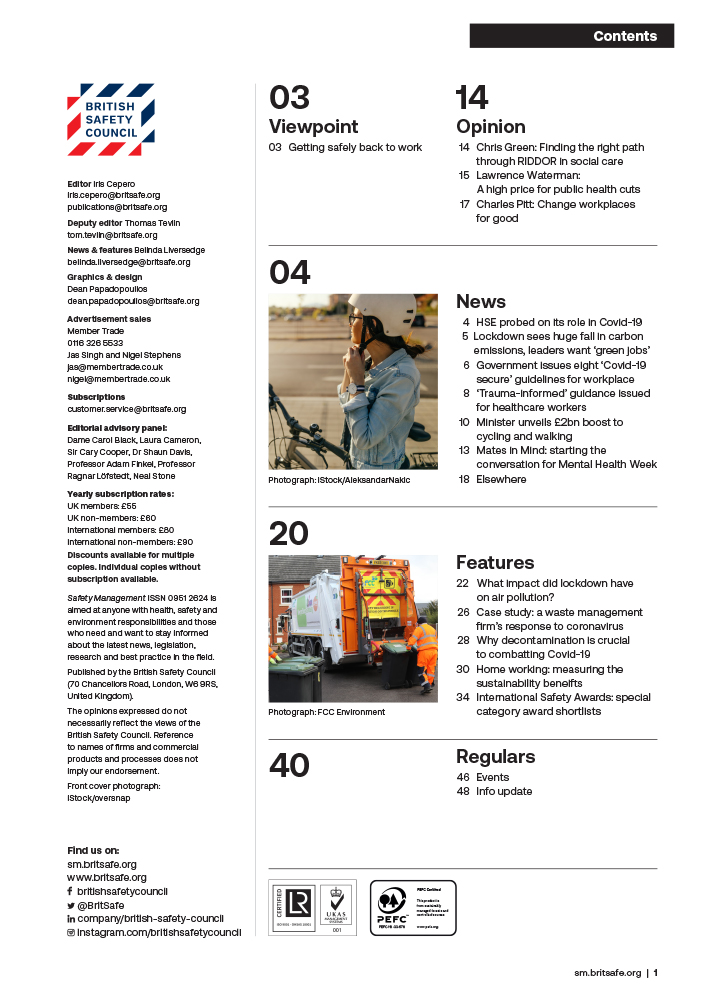Incidents of violence, harassment and bullying towards nurses in India regularly hit the headlines, but commentators hope that new draft government guidelines designed to improve working conditions in the healthcare sector could help tackle the problem.
Features
Nursing in India: harassment remains a problem
When colleagues of a 22-year-old nurse at the Asian Heart Institute in Mumbai saw her walk out of the hospital with tears gushing down her face after a fight with a senior member of staff at work on a Monday evening in October 2011, little did they know that it was the last time they’d see her. That night Beena Baby was found hanging from a ceiling fan in the staff quarters.
Coming from a poor family of daily wagers in Kerala, Beena had joined the hospital five months before her untimely death. According to her colleagues, she was fed up with the job, and desperately wanted to leave but was unable to because of a financial bond she had signed with the hospital authorities.
The bond specified that a nurse has to pay the hospital Rs 50,000 if he/she quits before completing two years of service. Until the two years of service are successfully completed, the nurse’s educational certificates are retained by the hospital authorities.
Beena Baby was despondent and felt trapped after the altercation with the senior member of staff, who reminded her of the bond, said her colleagues. Unable to bear the harassment, Beena took the extreme step and ended her life, they added.
 Photograph: iStock, credit Sujay Govindaraj
Photograph: iStock, credit Sujay Govindaraj
Experts say the Indian Nursing Council and state nursing councils do not have any policy documents on the legal rights of nurses in the workplace. There is also no document setting out the practicing rights of nurses in India.
“Although the bond system is an indirect violation of the Bonded Labour System (Abolition) Act, 1976, the Indian Nursing Council, an autonomous body under the Union Ministry of Health and Family Welfare, could not effectively intervene in matters relating to nurses in the service sector as they were not legally equipped by law to do so,” said a spokesperson from the United Nurses Association (UNA), India’s largest trade union of nurses with over 500,000 members.
Incidentally, Beena’s death triggered a public outcry, and this outrage led to the formation of the UNA.
In another incident in October 2020, 28-year-old Megha Acharya, a staff nurse at the Civil Hospital in Navsari district in Gujarat, committed suicide by hanging herself at her home. Acharya, who had rendered exemplary service as a ‘corona warrior’ in a hospital, left behind a four-and-a-half-page suicide note levelling charges of harassment against various senior staff at her workplace.
Sexual harassment allegations
In June, over 50 nurses at the state-run Hamidia Hospital in Bhopal accused its medical superintendent of sexual harassment. The nurses wrote to Madhya Pradesh’s chief minister Shivraj Singh Chouhan accusing medical superintendent Dr Deepak Maravi of indecent behaviour – particularly during night shifts – and demanded action on the allegations.
After being under public and professional scrutiny for days following the allegations of sexual harassment, Dr Maravi resigned from his post on 27 June.
A study by Sreelekha Nair and Madelaine Healey on the working conditions and status of nurses in India produced for the Centre for Women’s Development Studies in February 2006 found that nurses regularly faced threats and sexual harassment from patients, families, doctors and class four employees. The case of Aruna Shanbaugh proves their statement right.
Shanbaug, a nurse in the KEM Hospital in Mumbai, was brutally sexually assaulted by a hospital sweeper, Sohanlal Walmiki, in the hospital’s changing room in 1973. Shanbaug had earlier publicly rebuked him for stealing food meant for the hospital’s dogs. He attempted to choke her and the asphyxiation cut off the oxygen supply to her brain. She was left in a vegetative state for 42 years until her death in 2015.
Walmiki was convicted of assault and robbery, but not of sexual assault, and was allowed to serve his two sentences simultaneously. He walked free after just seven years.
Sadly, not much has changed in terms of safety and security for India’s nurses.
Healthcare workers face higher risk of assault
Speaking at an online event in May organised by the Innovative Alliance for Public Health (IAPH), a group working to strengthen nursing services, Dr Swati Rane, vice president of the Clinical Nursing Research Society based in Mumbai, said that even today, female nurses and other healthcare staff might not feel safe in the KEM Hospital’s corridors as the administration appear to have given little thought to the locations of the changing rooms for nurses and doctors.
“There is hardly any security for the nurses and healthcare workers when they access these rooms,” she said.
Aatmika Nair, a medical officer at the District Tuberculosis Centre under the District TB Control Society in Mumbai, and a volunteer at the Association for Socially Applicable Research (ASAR), a Pune-based non-profit body, noted: “Healthcare workers are four times more likely to be assaulted than other professionals in the general workplace, with junior doctors and nurses in government hospitals likely to be more at risk.”
Dr Maya John, an assistant professor at Delhi University, who is also associated with the United Nurses of India, added: “Many of the areas in public hospitals, which are massive structures, are poorly lit and very unsafe for women.”
Workplace violence is rampant in hospitals and nurses have to steel themselves to face their fears of being abused, threatened and even violently attacked, experts have warned.
Although studies show there is a rising trend of violence against nurses in the workplace, most cases are swept under the carpet. As a result, the available statistics about the number and scale of incidents of violence against female nurses and healthcare staff are far from accurate or reliable.
“When we talk about violence, the first thing that strikes our minds is a brutal physical or at times sexual assault,” says Anagha Abhoy Sinha, consultant psychiatrist in India.
“Physical assault may result in grievous bodily harm. At times, it may even result in grievous disability or mortality. But there are several negativistic behaviours and acts that qualify as workplace violence. It could be in the form of verbal abuses and insults, shouting, sexually charged comments, intimidation or other threatening behaviour, such as aggressive gesturing or stalking the worker, slamming doors or fisting.
“Any of these aggressive behaviours can prove to be detrimental to the psyche and professional performance of a nurse.”
Sinha added that an empathetic approach is required to address the problem of violence against female nurses and to safeguard the rights of nurses in Indian healthcare establishments and settings.
Health ministry issues new guidelines
The health ministry’s recent draft guidelines, proposing annual health check-ups, separate washrooms and changing rooms, a creche facility and a maximum working week of 40 hours, among other measures, designed to improve the working conditions of nurses in all healthcare institutions have been widely welcomed by commentators as a step in the right direction.
The guidelines also recommend that all healthcare establishments must, as far as is possible, provide accommodation for their nursing staff in or near their premises.
The health ministry’s document stated that the World Health Organization (WHO) Global Strategy on Human Resources for Health: Workforce 2030 calls on all governments and healthcare providers globally to take appropriate steps to uphold “the personal, employment and professional rights of the health workforce, including safe and decent working environments and freedom from all kinds of discrimination, coercion and violence”.
The health ministry’s draft guidelines add that a safe and healthy work environment for nurses is critical in ensuring the provision of high quality nursing care. “Therefore, the Ministry of Health and Family Welfare has drafted the guidelines to give effect to the resolution towards improving working conditions of nurses in various healthcare establishments,” the document said.
According to the draft guidelines, all healthcare establishments will have to ensure that adequate infrastructure and well-equipped workstations are provided in all units or wards to enable the efficient functioning of the nursing staff.
The guidelines will also require all healthcare establishments to have separate washrooms and changing rooms (including providing drinking water, pantry facilities, lockers and clean uniforms etc) for the nursing staff. They will also be required to set up designated rest rooms for nurses who are required to work long shifts.
Healthcare establishments must establish internal complaints committees
The healthcare establishments will also have to establish internal sexual harassment complaint committees in accordance with the provisions of the Sexual Harassment of Women at Workplace (Prevention, Prohibition and Redressal) Act, 2013.
They will also be required to take the necessary measures to ensure the security of nurses during night shifts. This will include ensuring that proper lighting is provided in and around work settings to help protect nurses from the risk of violence, harassment and sexual assault.


FEATURES

India’s path to net zero: a work in progress
By Orchie Bandyopadhyay on 08 April 2025
India is implementing a variety of clean energy measures to hit its target of net zero greenhouse gas emissions by 2070, including plans to rapidly scale up the generation of nuclear power. However, climate experts say significant finance will be required from developed countries to phase out coal power, accelerate renewables deployment and expand the national electricity grid.

Too hot to handle: early arrival of heatwaves in India sparks calls for action to protect workers and the public
By Orchie Bandyopadhyay on 08 April 2025
Temperatures in India in February 2025 were the hottest since records began over a century ago, prompting warnings the country needs to urgently step up efforts to protect both workers and the general population from the health risks posed by extreme heat and humidity.

